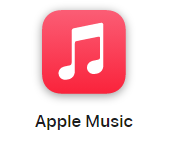Ctrl+Alt+Del: Apple Vision Pro is right to shun the metaverse

OPINION: It’s been a few days since Apple’s WWDC keynote and the big reveal of the Vision Pro headset. If you’ve kept an eye on AR/VR launches over the last several years, you’ll notice you can’t move for the word “metaverse”. But, Apple shunned to buzzword, and it’s a smart move.
There was a distinct difference between Apple’s Vision Pro presentation and those you see from the likes of Meta, from the language used to the visuals on show. You’ll typically see AR/VR showcases talk of transporting you to a virtual world and letting you explore the metaverse, as if you’ve been transported to a whole dimension. That’s great… I guess, but I’m being asked to fork out hundreds, if not thousands, of pounds for this fancy bit of technology, so what does it actually do?
It felt like this sentiment was at the forefront of Apple’s mind as various executives and product managers espoused the benefits of Apple Vision Pro. Apple leant on one of its biggest strengths – apps. Whereas rivals have focused on avatars and fully immersive virtual experience, Apple’s message boiled down to: “You can use all our apps that you already enjoy, but better”.

During the Vision Pro showcase, we saw FaceTime – which was, admittedly, when Apple dabbled in the realm of silly avatars – demonstrating the benefits that using it in mixed reality will bring, such as placing the windows of those that you’re chatting to alongside another window your referencing.

Apple Music
Apple Music gives you access to over 100 million songs and 30,000 playlists, ad-free. Listen online or off, across all your devices, and hear sound all around in Spatial Audio with dynamic head tracking. You can now try 1 month for free!
- Apple
- Get 1 month free
- £10.99 p/m
Safari was, of course, shown off too, with multiple large windows splashed across your virtual space. Bye, bye, multiple monitor setups. Then, there’s browsing your photos, taking in movies on Disney+, working away in Microsoft Office apps and creating in Adobe Lightroom, all confirmed to be coming to VisionOS.
All that adds up to Apple achieving something that other mixed reality headsets have failed to do in my eyes. Apple made me feel like I’d actually use this new take on a computer and, most importantly, benefit from using this on a daily basis. The issue of a high price and low battery life can’t be ignored, but Apple wasn’t just selling the Vision Pro headset at WWDC 2023, it was selling a whole concept and its potential.
Conversely, other mixed reality showcases have had me saying out loud, “I wouldn’t use that, or that, or that“. Beyond appreciating the games available, mixed-reality headsets have failed to effectively sell themselves as something worth using for hours at a time. And I absolutely never have felt like they could be the future of computing. Rather than ‘metaverse’, Apple’s buzzword of choice was ‘spatial computing‘. It’s something that’s far easier to imagine, the concept feels tangible. Rather than trying to sell you on the idea of a complete virtual world.
Apple failed to justify the price of this device – seriously, this isn’t going to go mainstream at over £3000 and just two hours of battery life. But, Apple’s Vision Pro presentation or, more specifically, its VisionOS reveal was a success in marketing. Spatial computing does indeed look like the future of computing, unlike the metaverse that has been sold to us up until now. A couple of weeks ago in Ctrl+Alt+Del, I asked Apple to put a Mac on my face and, clearly, they were way ahead of me.
Ctrl+Alt+Del is our weekly computing-focused opinion column where we delve deeper into the world of computers, laptops, components, peripherals and more. Find it on Trusted Reviews every Saturday afternoon.







